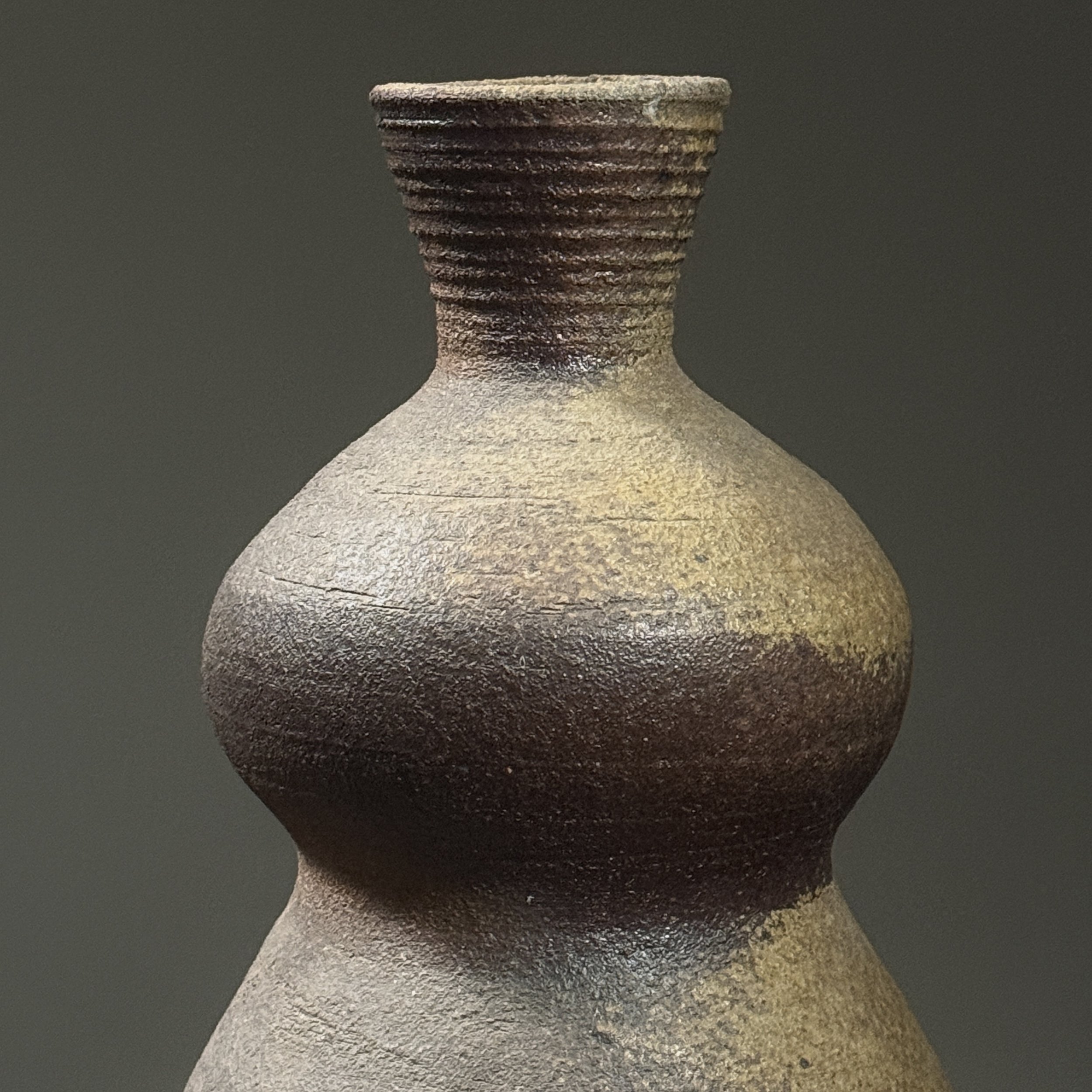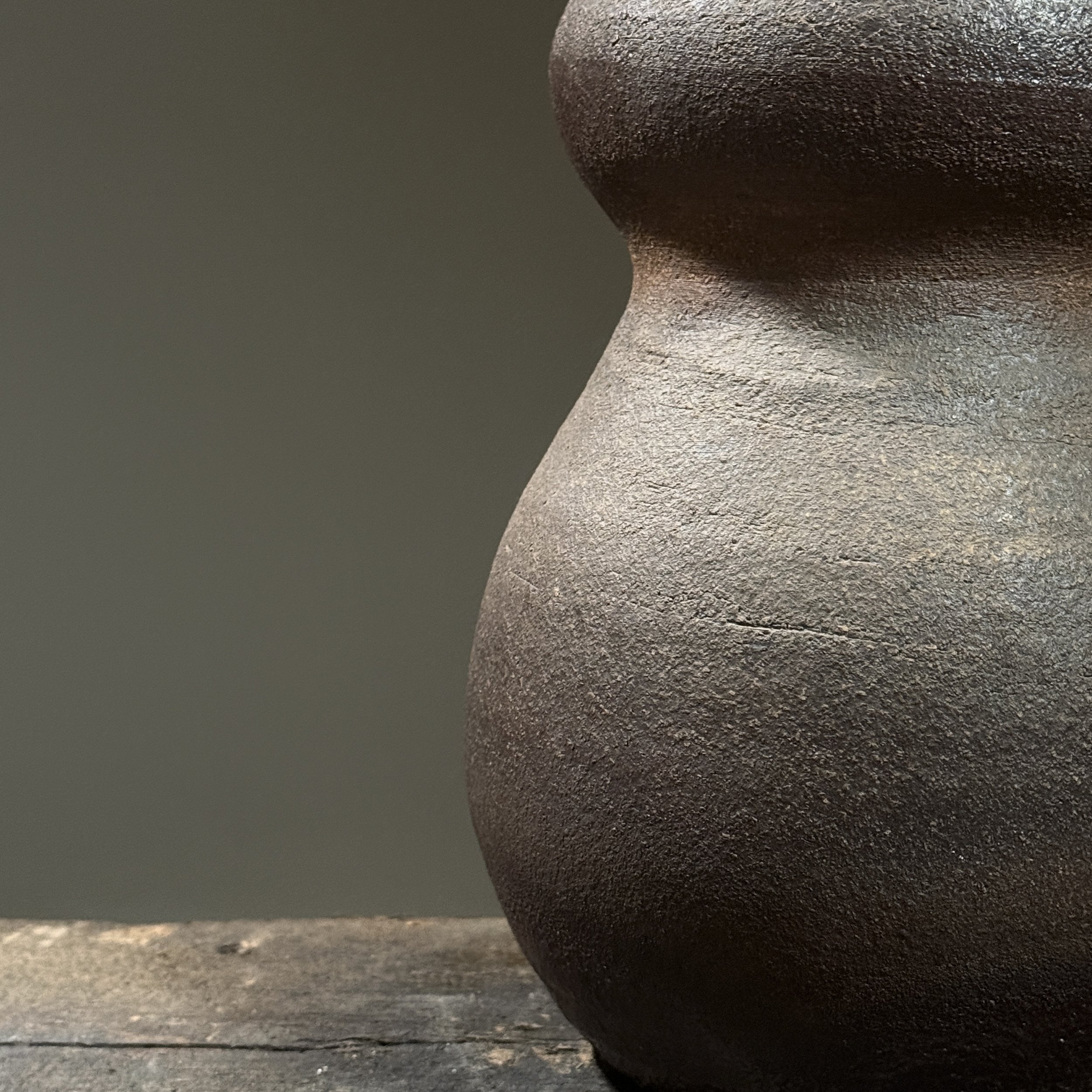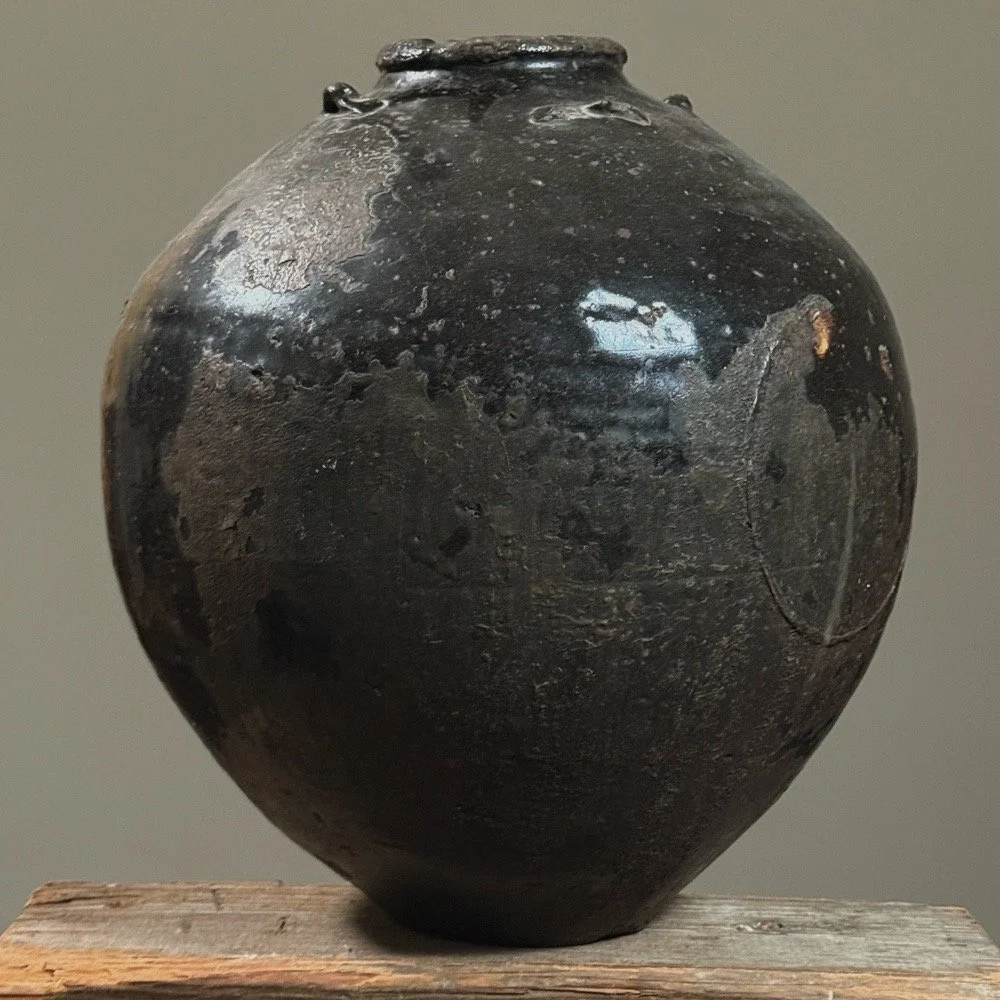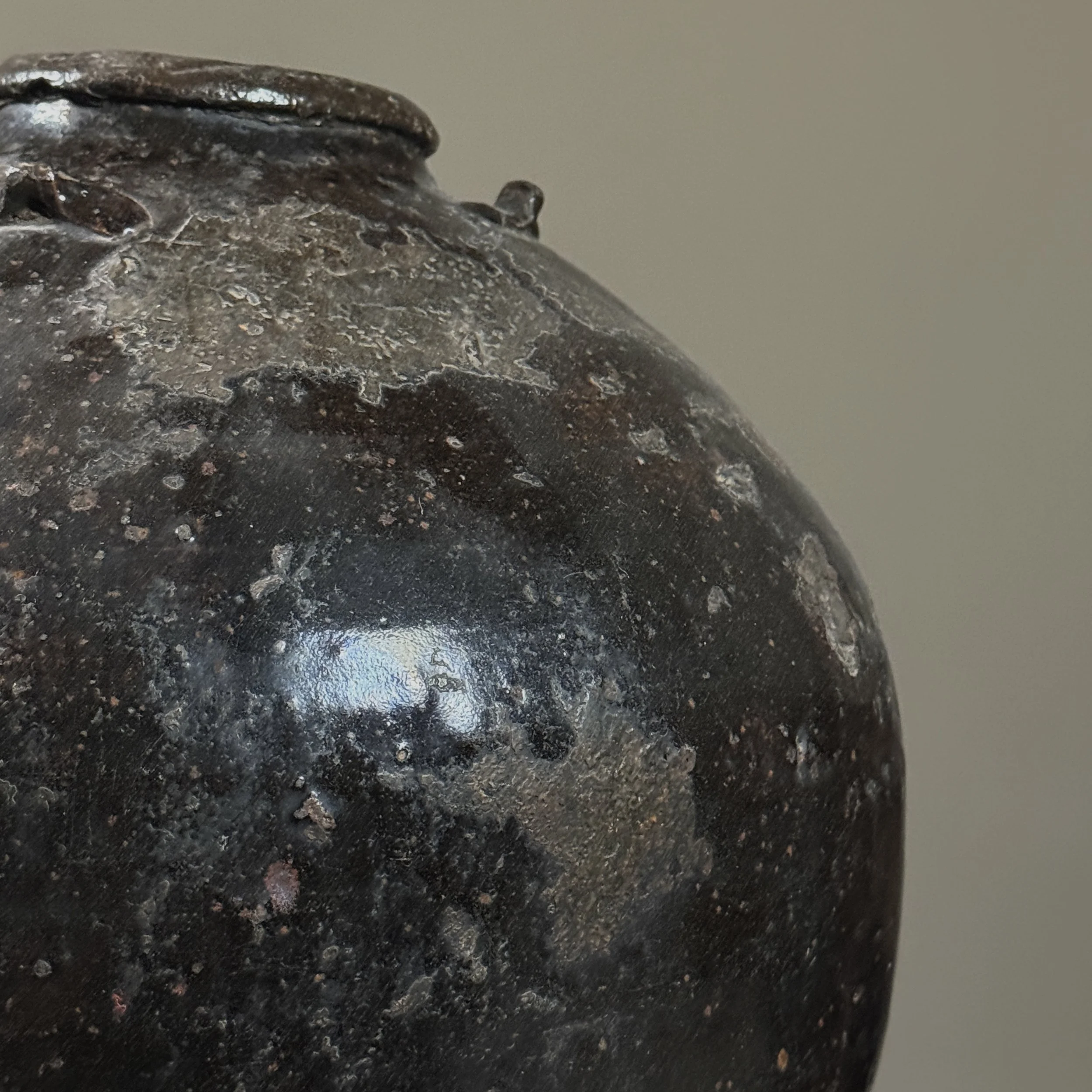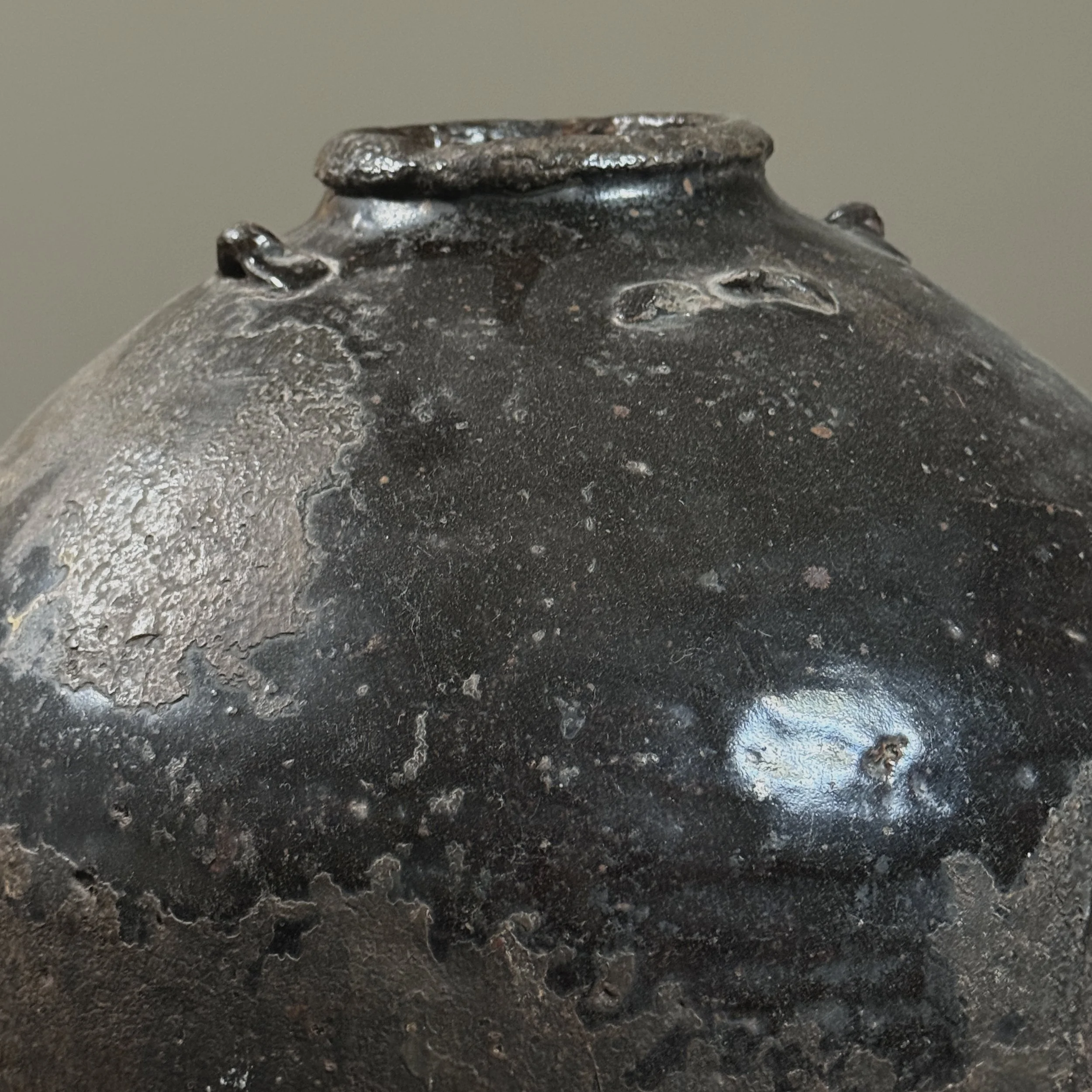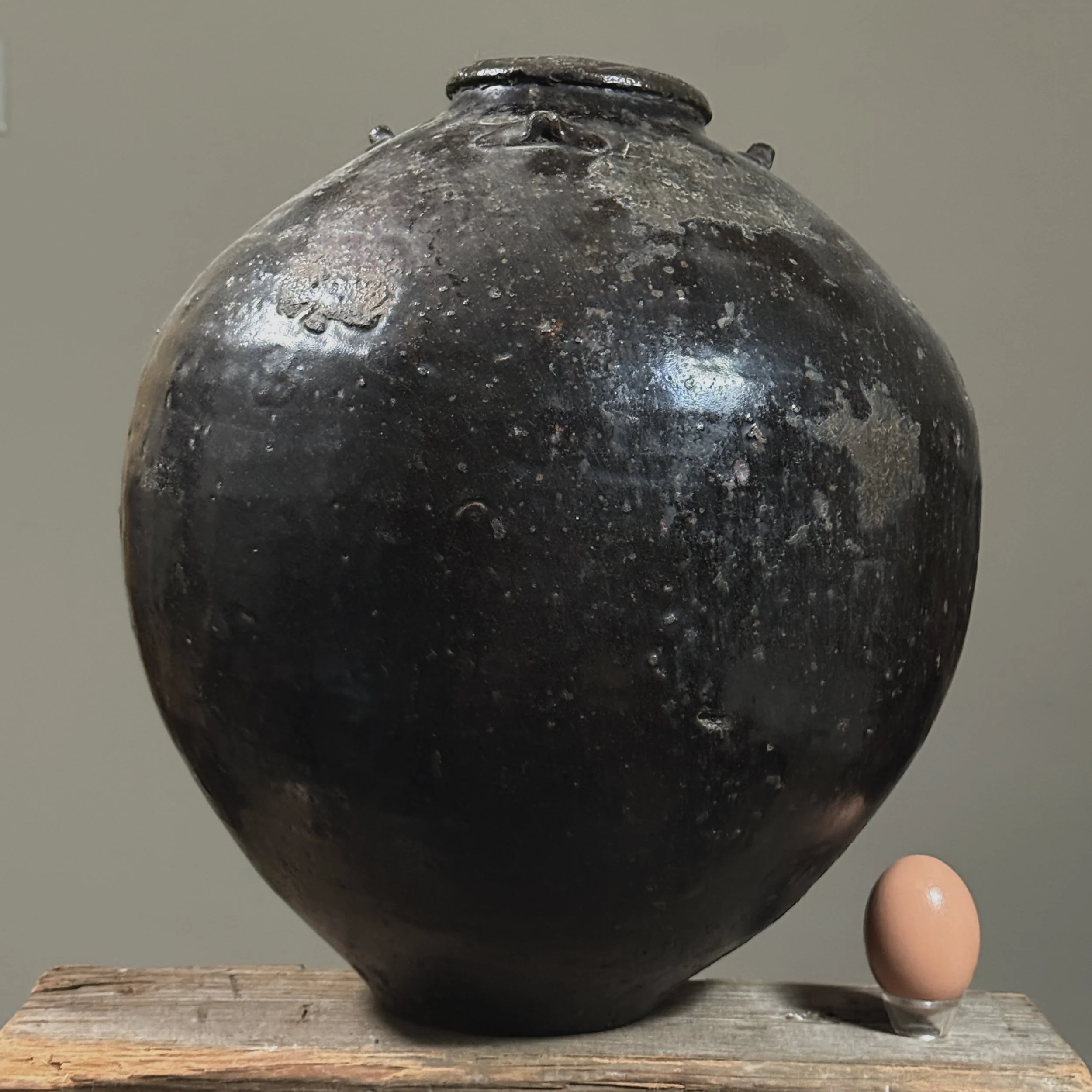 Image 1 of 7
Image 1 of 7

 Image 2 of 7
Image 2 of 7

 Image 3 of 7
Image 3 of 7

 Image 4 of 7
Image 4 of 7

 Image 5 of 7
Image 5 of 7

 Image 6 of 7
Image 6 of 7

 Image 7 of 7
Image 7 of 7








Albert Green (1914-1994) Vintage Studio Salmon Colored Porcelain Raku Vase (Signed)
Vintage Studio Salmon Colored Porcelain Raku Vase Signed By Albert Green. Tall porcelain vase with puffs of blackened areas on the bottom and base of vase. In good condition with minor wear from age.
Size: 14”H x 5”D
A potter and painter, Albert Green earned an international reputation for his ceramics, stoneware, and canvases. A graduate of the University of Pennsylvania, he studied painting at the Art Students League in New York City, supporting himself with retail jobs selling men’s clothing. But in 1946 a chance encounter with a display of contemporary Japanese pottery inspired him on the spot to switch from painting to pottery. Green learned pottery techniques through engineering manuals and applied his knowledge of college chemistry to teach himself glazing. “In those days I looked at pots constantly,” he said. “I’d travel 100 miles to look at a good pot. I simply taught myself.”
He took his painting skills and applied them to his clay works, creating pieces that critics praised for their painterly qualities and subtle sense of color. In 1976, he retired from the retail clothing business to devote himself to pottery full time. His lifelong love of Asian ceramics prompted a near obsession with re-creating the elusive greenish-blue guan glaze used on Chinese pottery of the Song dynasty (960−1279). He experimented with techniques for several years in his Westfield, NJ, studio before he was able to re-create the famed glaze. “I finally figured out how I can get it,” he said. “But I’ll never know how [Chinese potters] got it.
Vintage Studio Salmon Colored Porcelain Raku Vase Signed By Albert Green. Tall porcelain vase with puffs of blackened areas on the bottom and base of vase. In good condition with minor wear from age.
Size: 14”H x 5”D
A potter and painter, Albert Green earned an international reputation for his ceramics, stoneware, and canvases. A graduate of the University of Pennsylvania, he studied painting at the Art Students League in New York City, supporting himself with retail jobs selling men’s clothing. But in 1946 a chance encounter with a display of contemporary Japanese pottery inspired him on the spot to switch from painting to pottery. Green learned pottery techniques through engineering manuals and applied his knowledge of college chemistry to teach himself glazing. “In those days I looked at pots constantly,” he said. “I’d travel 100 miles to look at a good pot. I simply taught myself.”
He took his painting skills and applied them to his clay works, creating pieces that critics praised for their painterly qualities and subtle sense of color. In 1976, he retired from the retail clothing business to devote himself to pottery full time. His lifelong love of Asian ceramics prompted a near obsession with re-creating the elusive greenish-blue guan glaze used on Chinese pottery of the Song dynasty (960−1279). He experimented with techniques for several years in his Westfield, NJ, studio before he was able to re-create the famed glaze. “I finally figured out how I can get it,” he said. “But I’ll never know how [Chinese potters] got it.
































